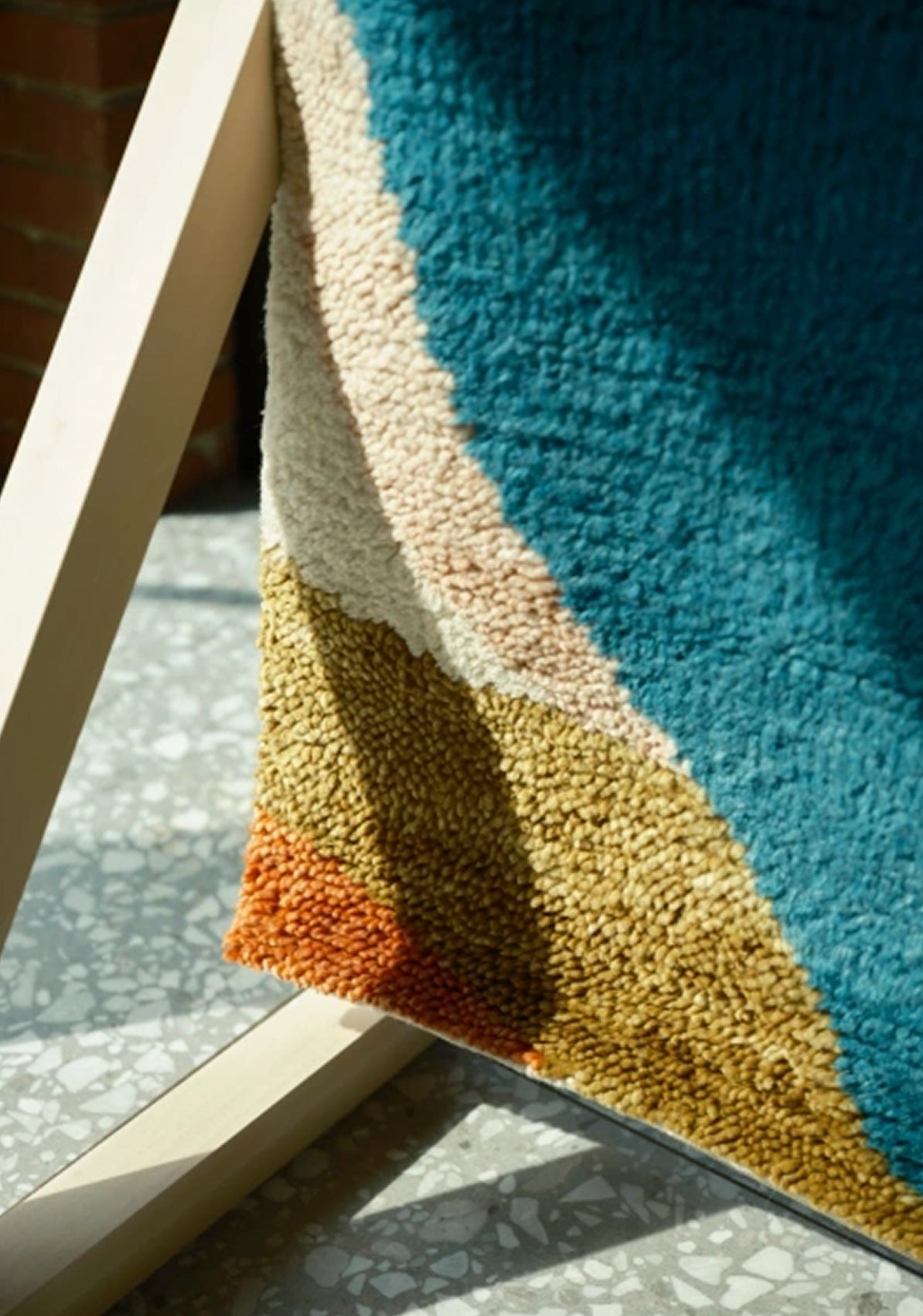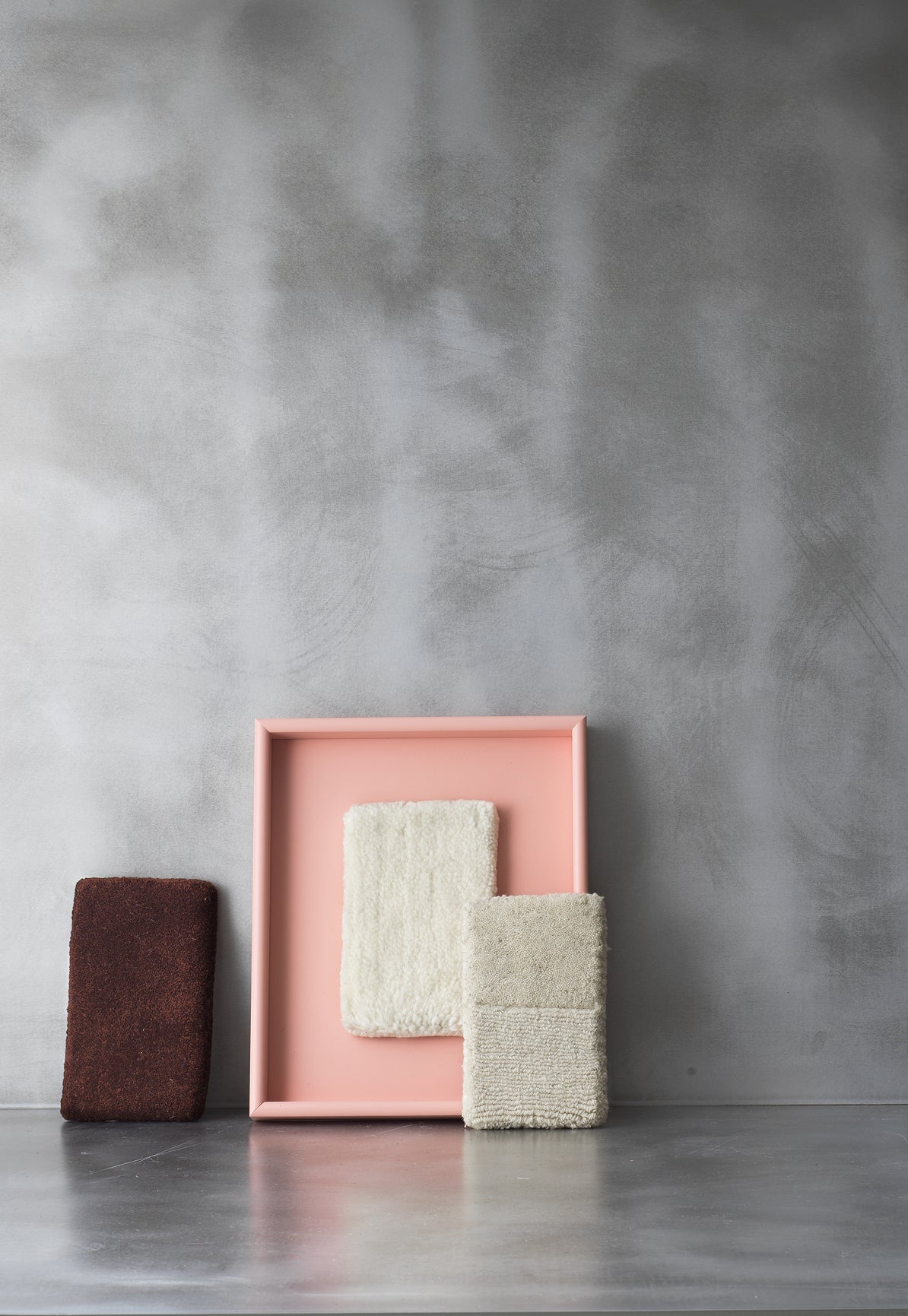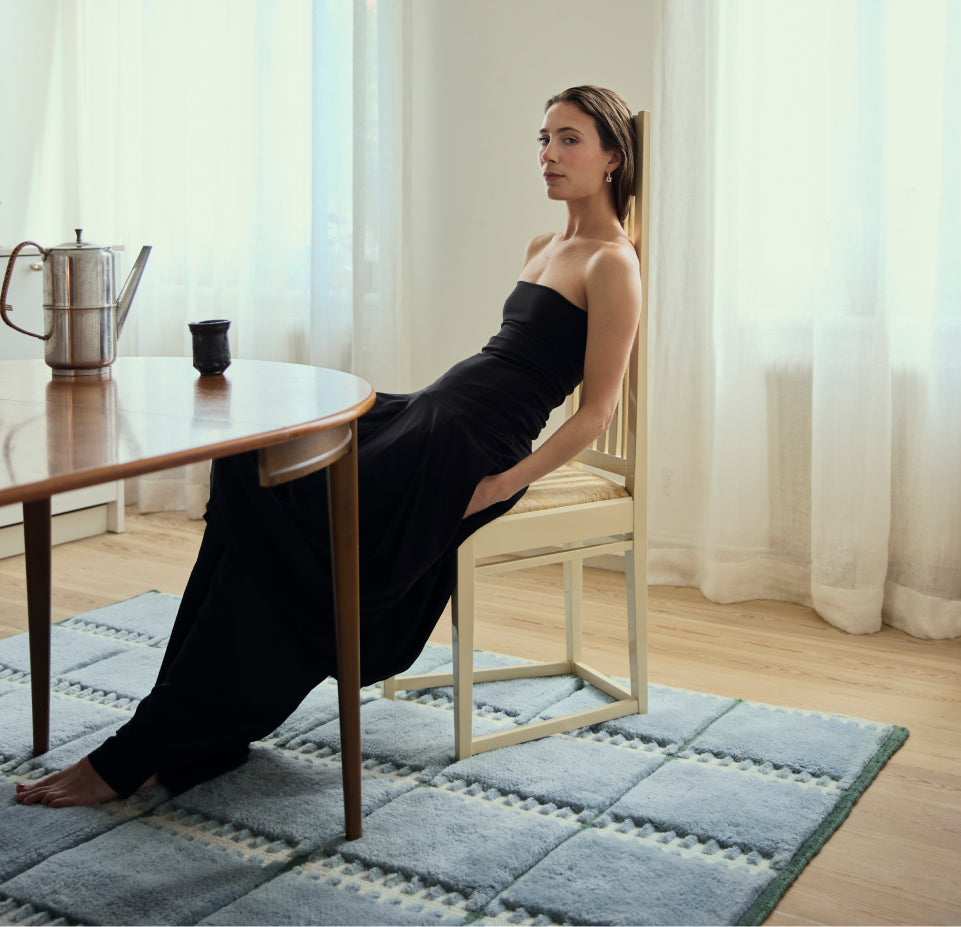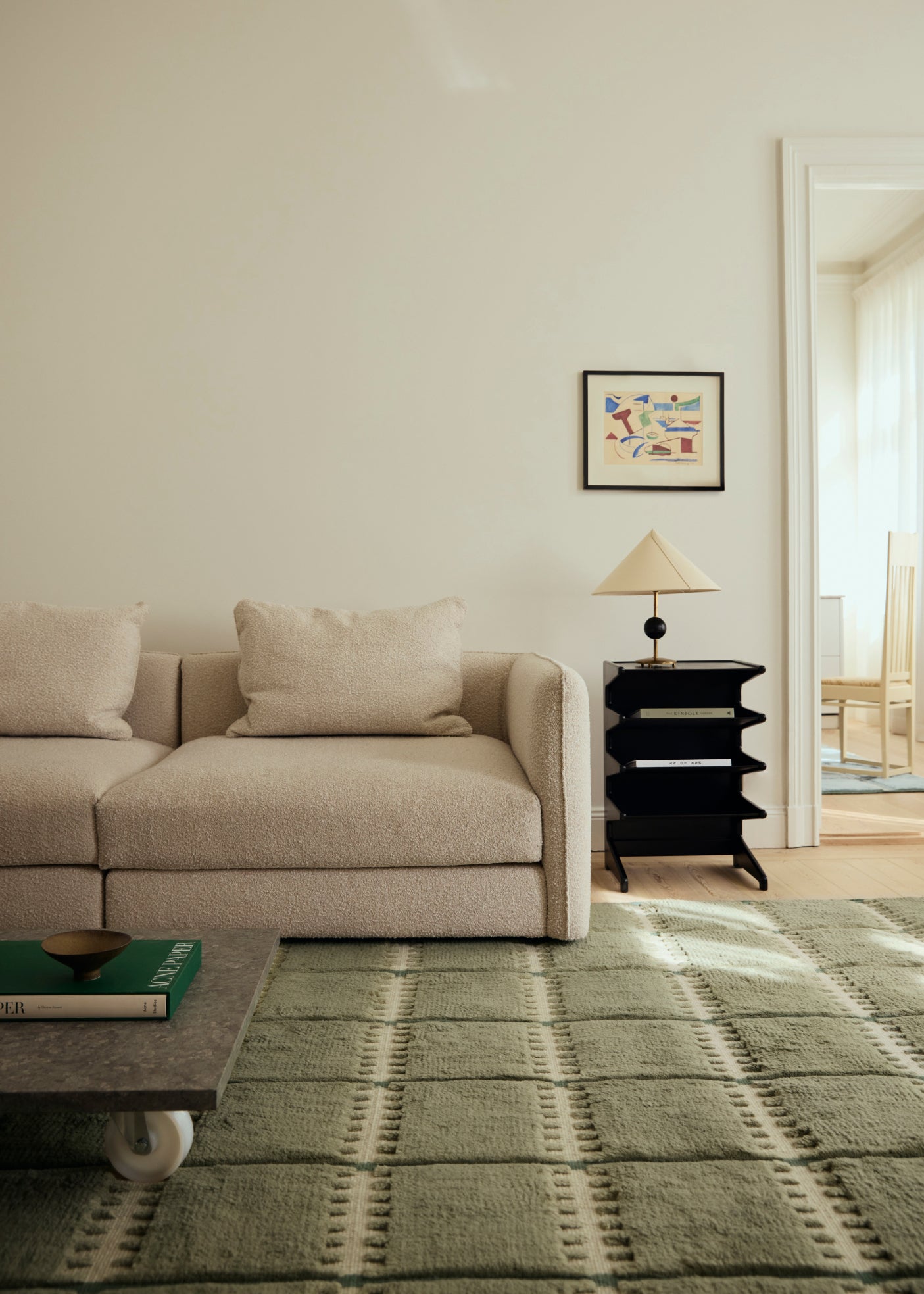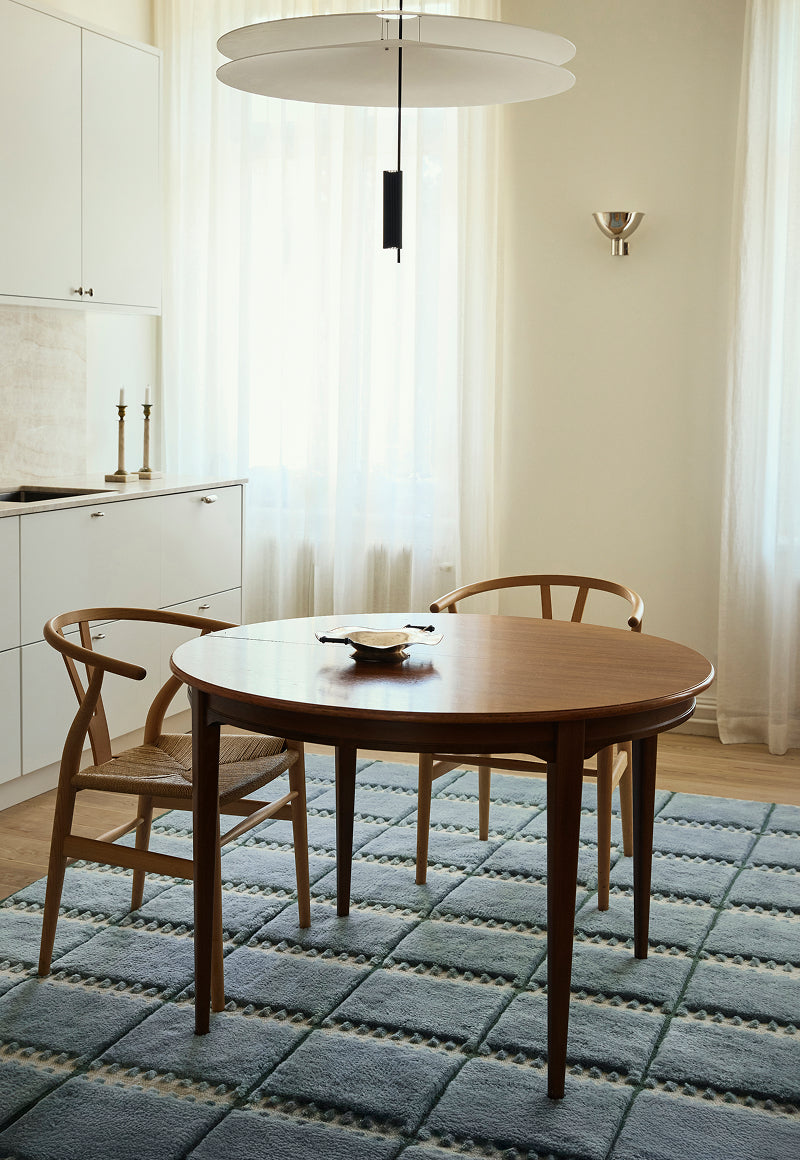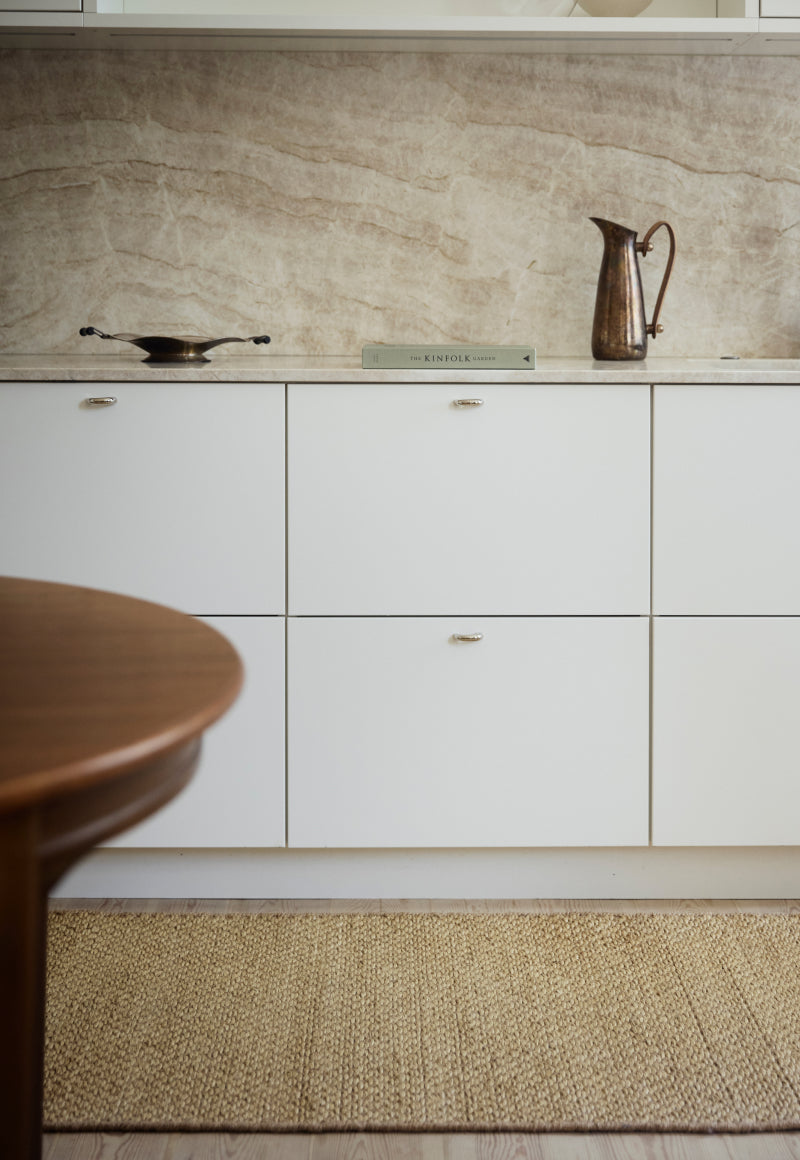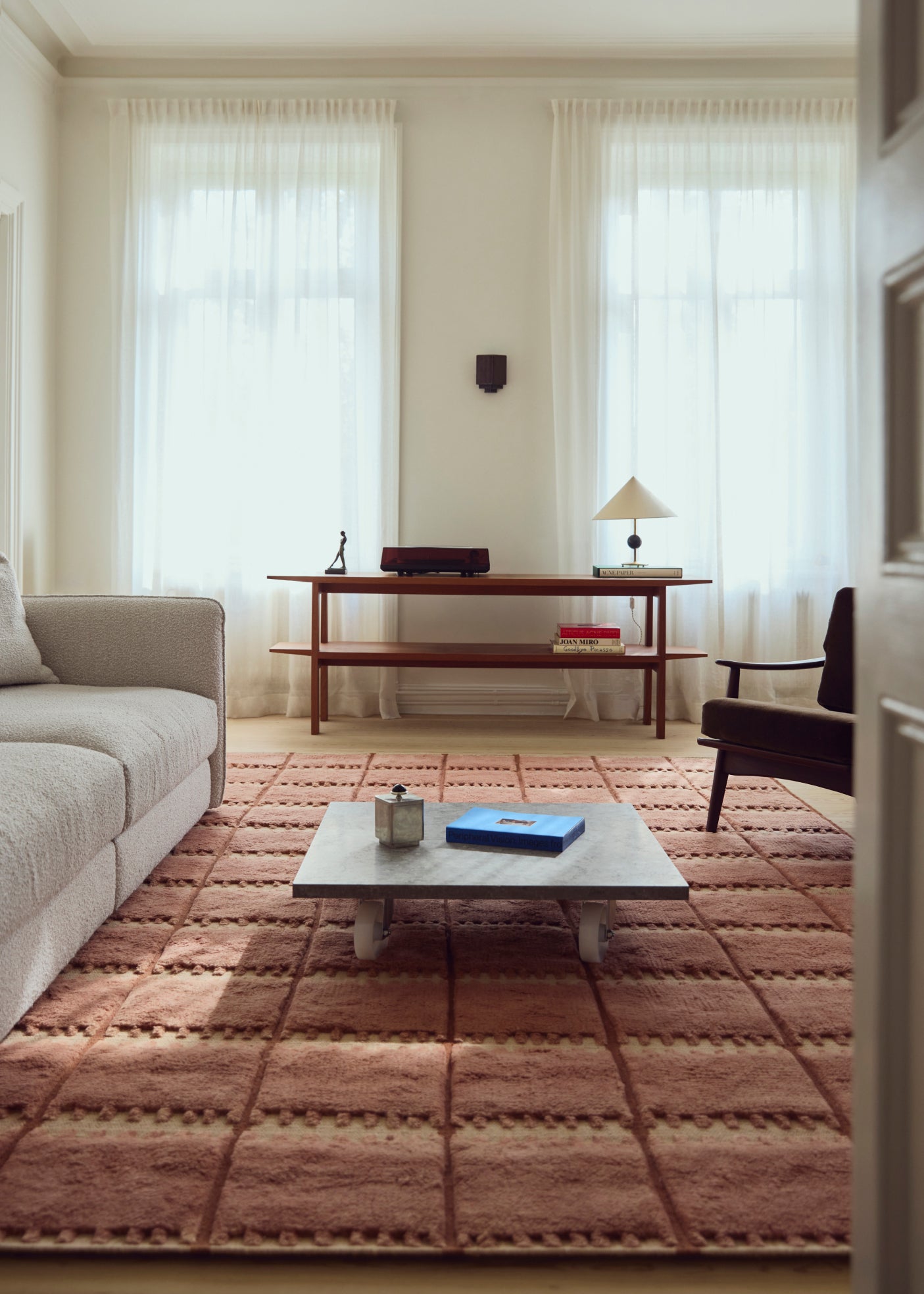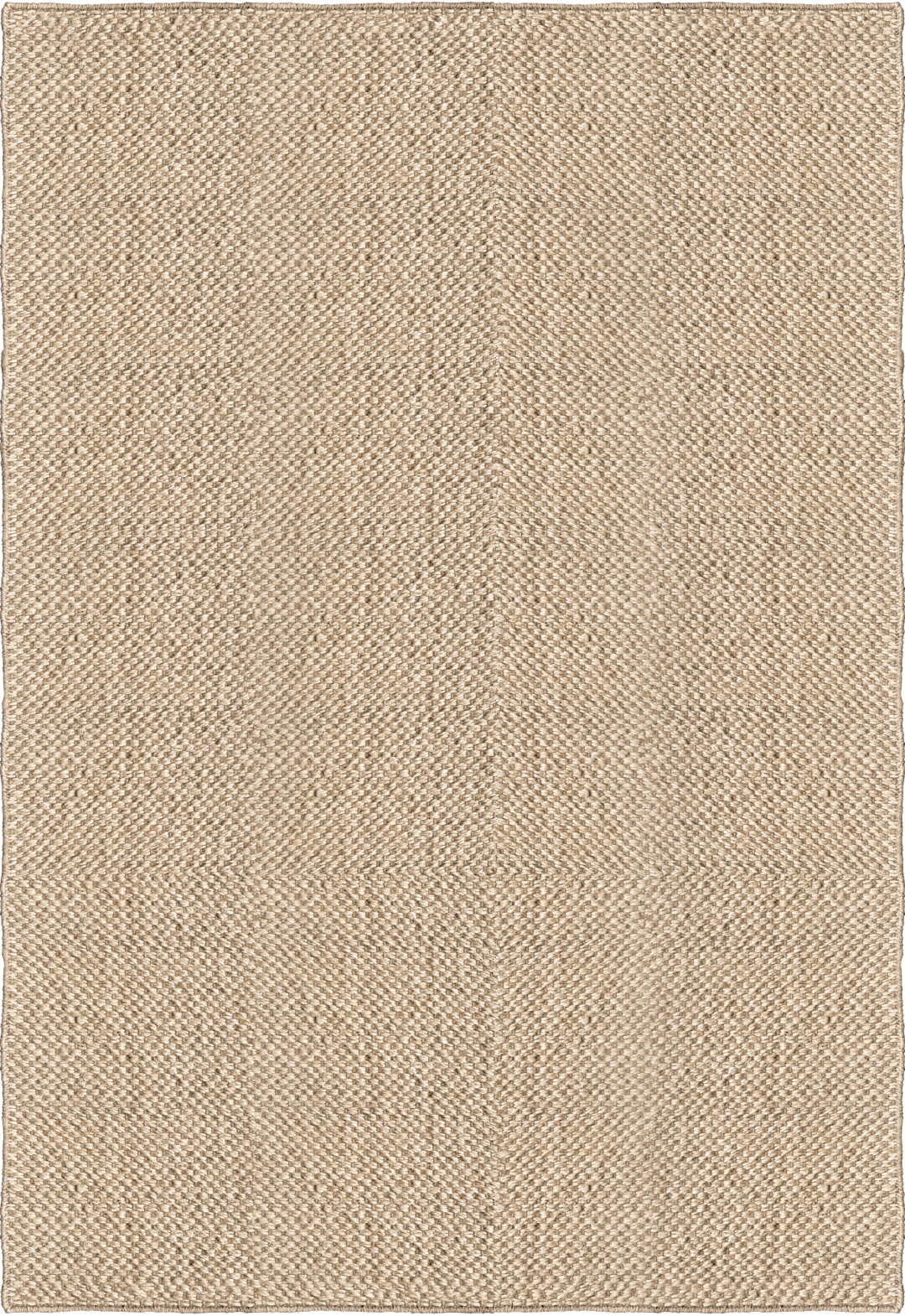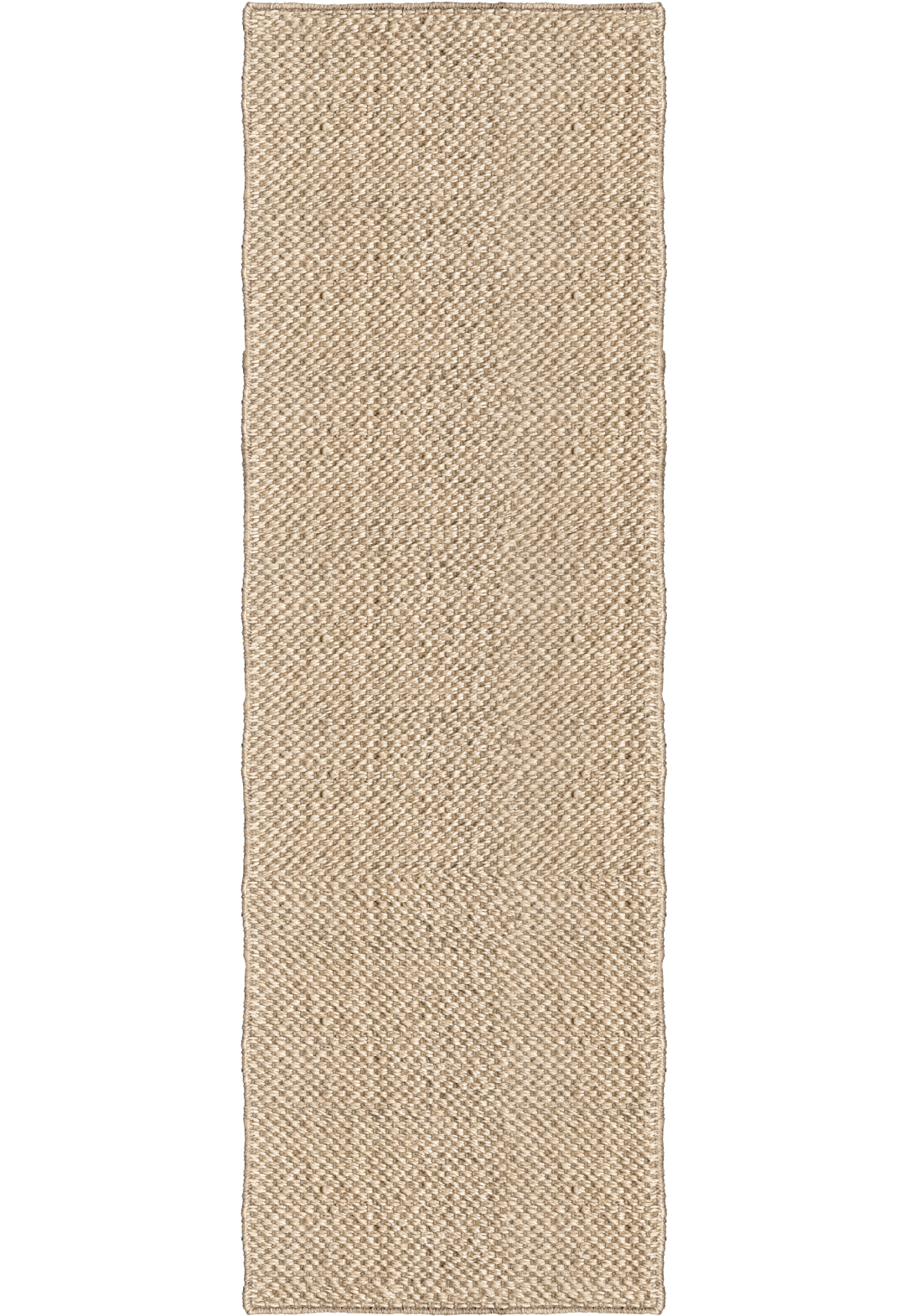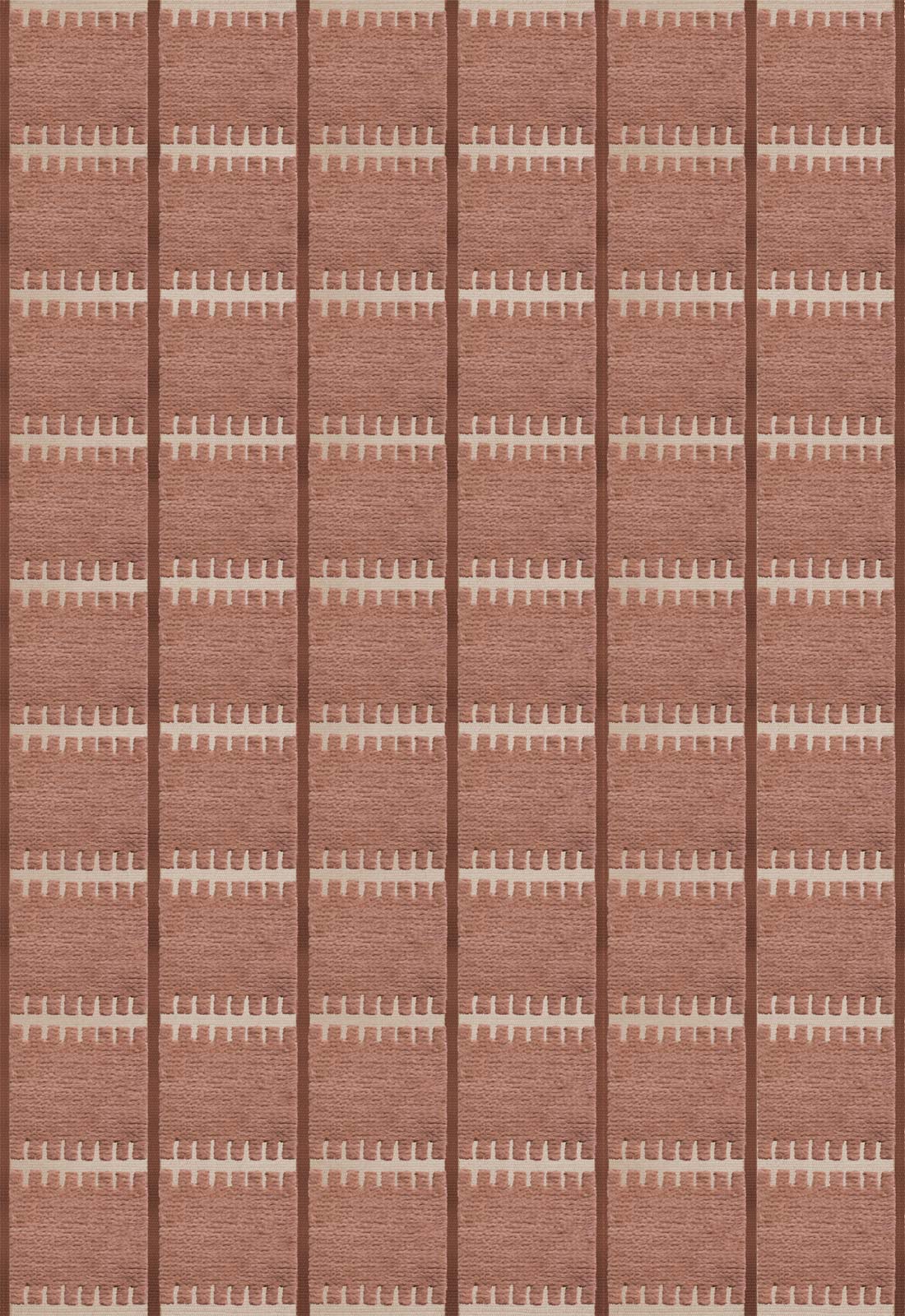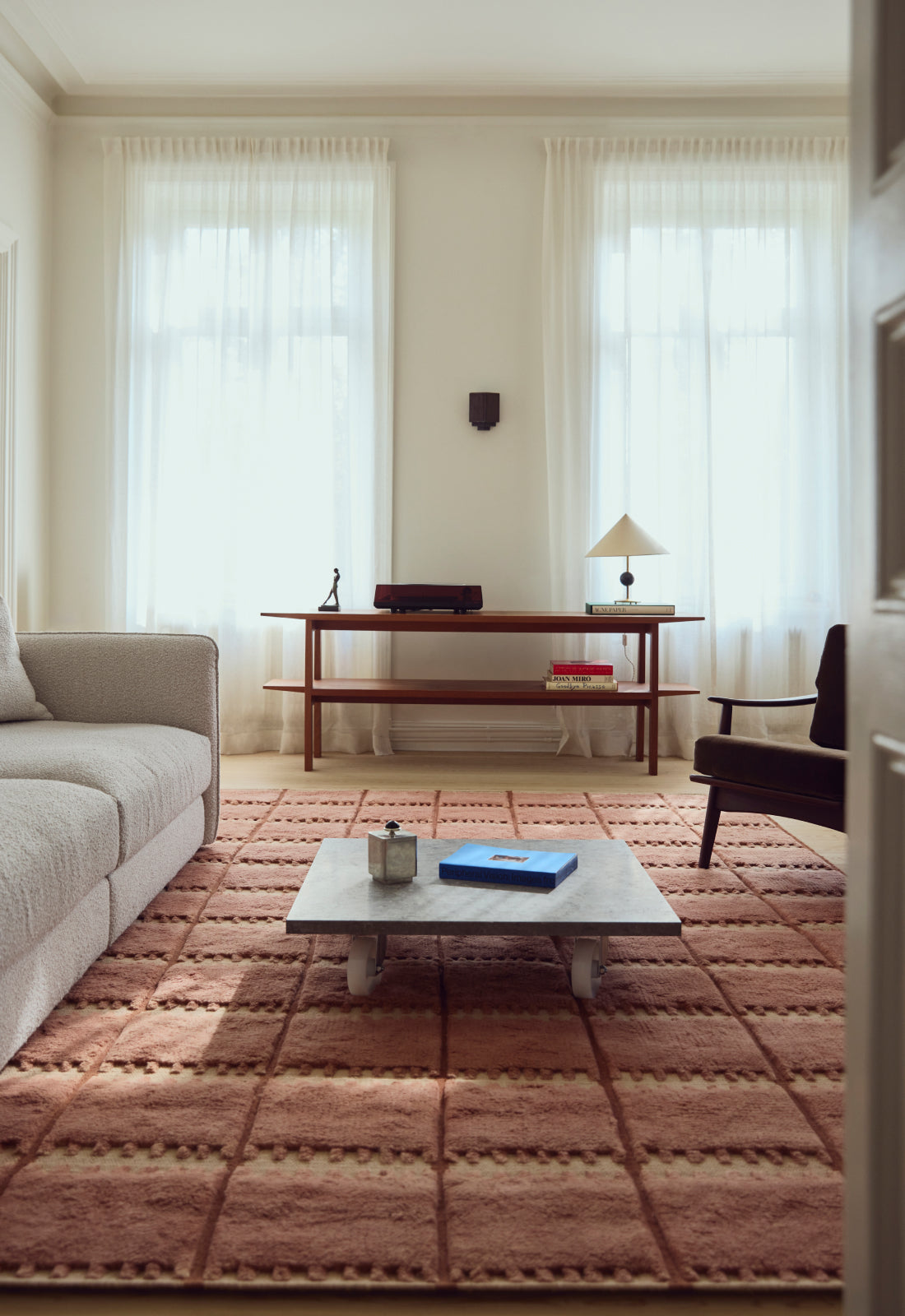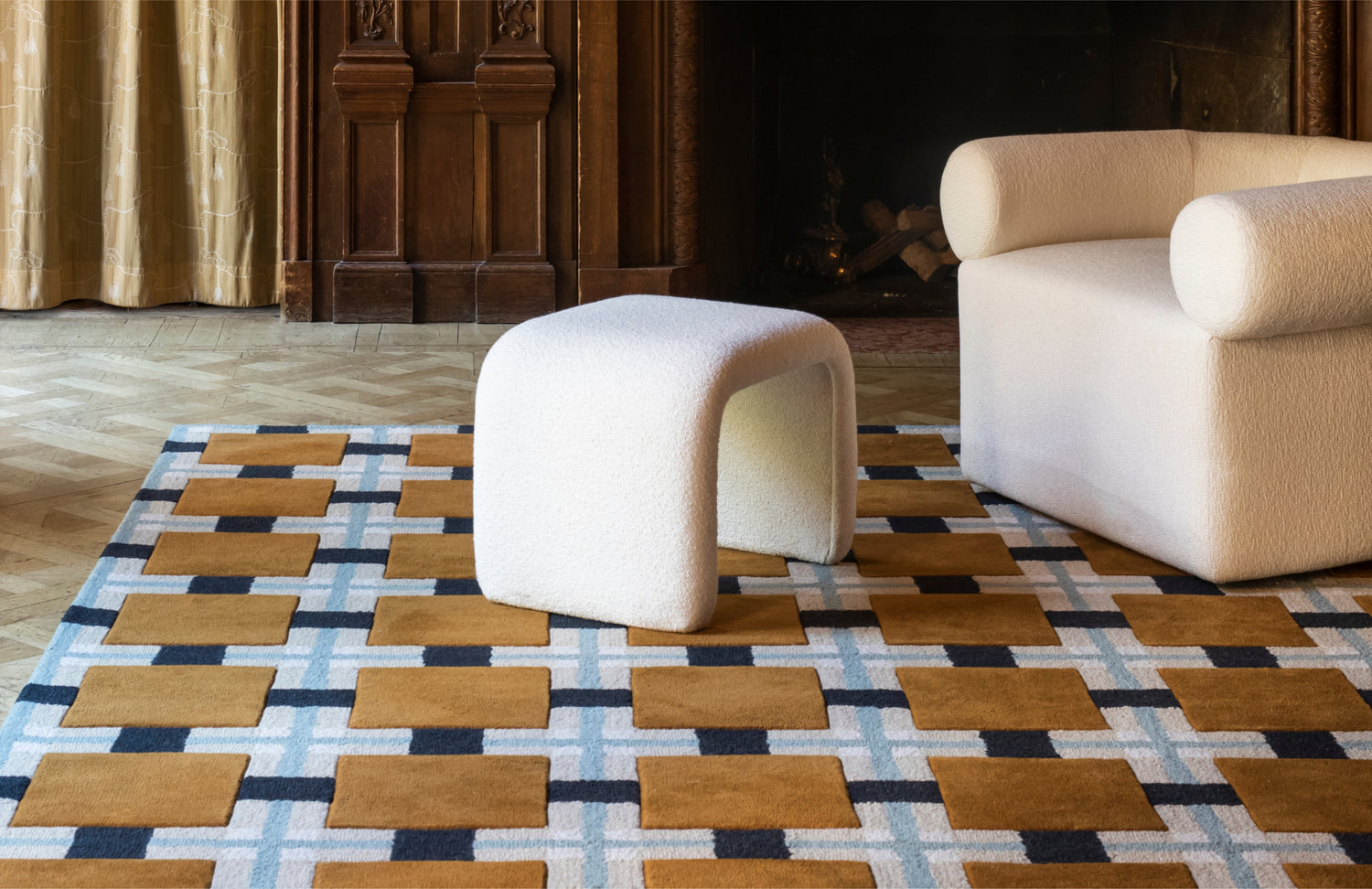HOME OF FILIPPA FUXE
Fashion designer Filippa Fuxe is known for her sculptural approach to the female form and her contemporary reinterpretation of femininity. A graduate of Beckmans College of Design in Stockholm and Central Saint Martins in London, she has created custom pieces for names such as supermodel Erin Wasson and artist Ice Spice, with her work featured in international publications — including the cover of American Vogue.
A Creative Universe in Östermalm
Lilly, Green, Wool Rug.
For the past year, she has served as Creative Director of her newly launched Swedish label LEONÍ. Together with her partner, Swedish composer Jacob Mühlrad, she lives in an apartment in Östermalm, Stockholm — a home where creativity and craftsmanship intertwine as a common thread.
Tell us about your home – what did you feel at the first viewing, and how have you made it your own?
We were looking for a home that could meet all our needs. Both Jacob and I share the fact that our work naturally becomes part of our home, which means it has to serve different functions. We need space, and we wanted to create a sense of studio throughout the home – a place filled with sewing, sketching, draping, and music-making.
When we found this apartment, there was only one picture in the listing. We went to a viewing and immediately felt at home. Even though it was worn and in need of renovation, it felt like the obvious choice. Since then, we’ve moved the kitchen, painted, sanded the floors, renovated the bathroom, and even created an additional bathroom out of an old closet.
It’s been our first renovation project, something that has required an enormous amount of work but has also been incredibly rewarding. A home truly becomes your own and personal when you build it from the ground up.
How do you create a home that feels both personal and inspiring?
The most important thing for me is that my home feels warm, safe, and full of ambiance. I mix a lot of vintage with modern pieces, sourcing items from auction houses and antiques.
What does “layering” mean to you – in your home and in your personal style?
Layering is about creating depth. In clothing, I often use layers to let light and shadow meet, to highlight what I want to emphasize and conceal what I don’t.
At home, it’s probably the same – multiple layers where different textures and qualities meet to create resonance.
"The most important thing for me is that my home feels warm, safe, and full of ambiance. I mix a lot of vintage with modern pieces, sourcing items from auction houses and antiques.”
Where do you find inspiration when decorating or collecting objects for your home?
I love small antique shops when traveling – we have a lot of ceramics from trips to Kyoto, and there’s so much beautiful vintage to be found across Sweden. Textiles, hand-painted cabinets – we truly have an incredible craft heritage here.
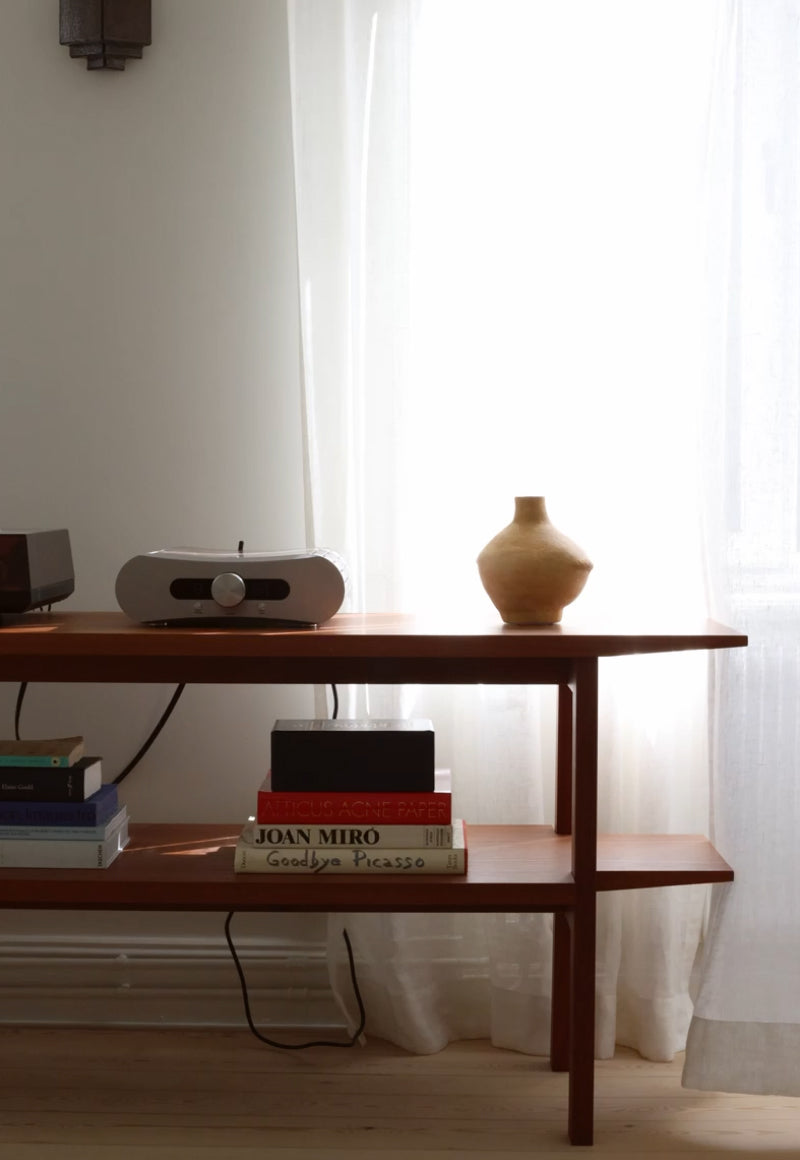
Which object in your home carries the most special story?
My most beautiful vase is a sand-colored clay piece I bought in Hälsingland. At some point, it had broken, and the natural thing might have been to throw it away. But the previous owner had taken the time to glue together all the hundreds of tiny pieces, which made it even more beautiful. There’s something about objects where you can see traces of previous lives and the memories they carry.
Lilly, Rust, Wool Rug.
How do you think a rug can transform a room – and what do you look for when choosing one?
A rug creates a home within the home. You can have all your objects – armchairs, floor lamps, paintings, coffee tables – but it’s the rug that gathers them, like a family. It becomes like a canvas, the foundation that carries everything else and gives the room a sense of wholeness.
How does your background as a fashion designer influence your interior choices – are there similarities in how you work with color, form, and material in fashion and in your home?
In my fashion work, I often try to maintain a sustainable approach. I’ve worked a lot with recycled cellulose as padding instead of down and make heavy use of materials I already have. It’s something I also try to apply in how we work with our home. We’ve tried to minimize waste of raw materials as much as possible – for example, we had leftover pieces from the Norwegian fauske marble we used in the bathroom, so we took all the small irregular pieces and laid a floor with them in another room. Limitations often open up new paths for creativity.
